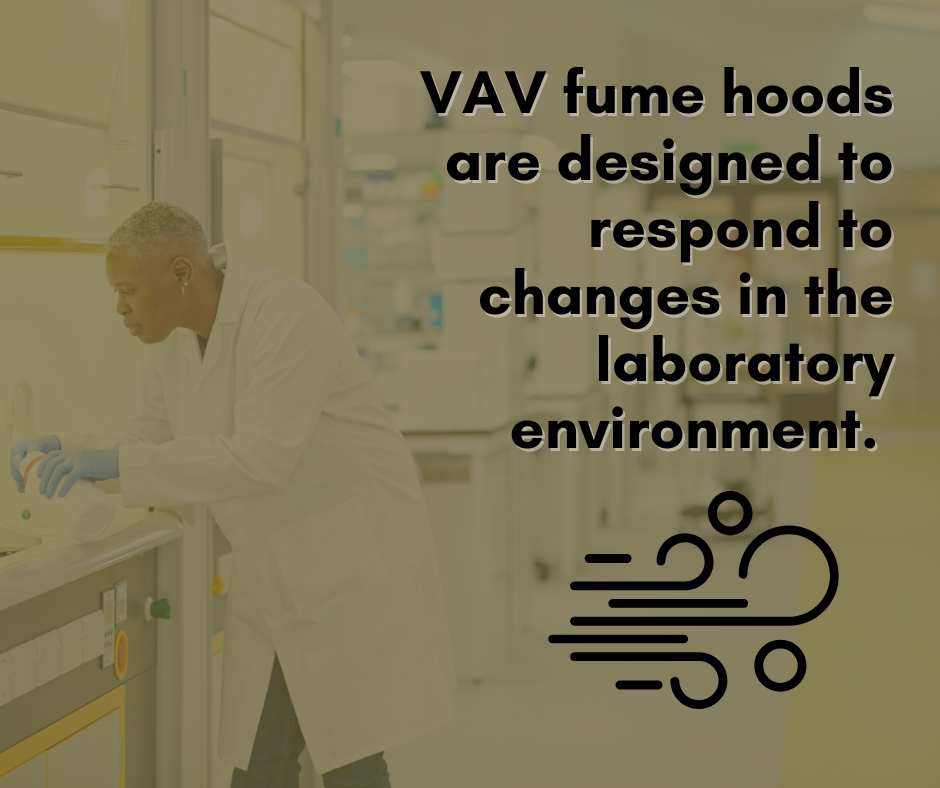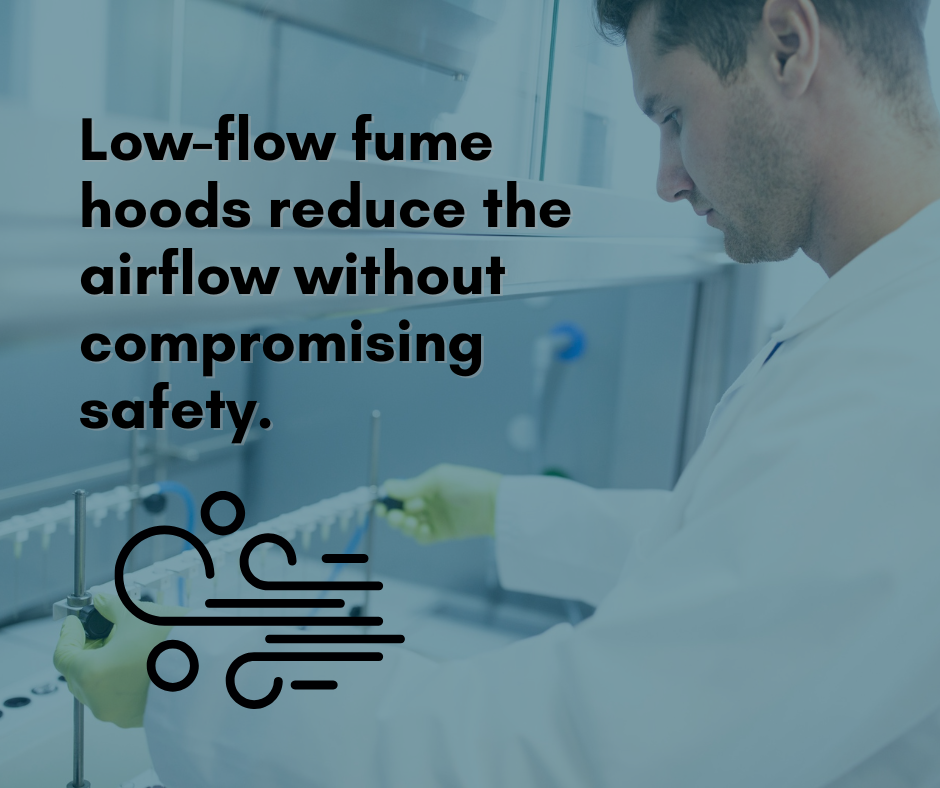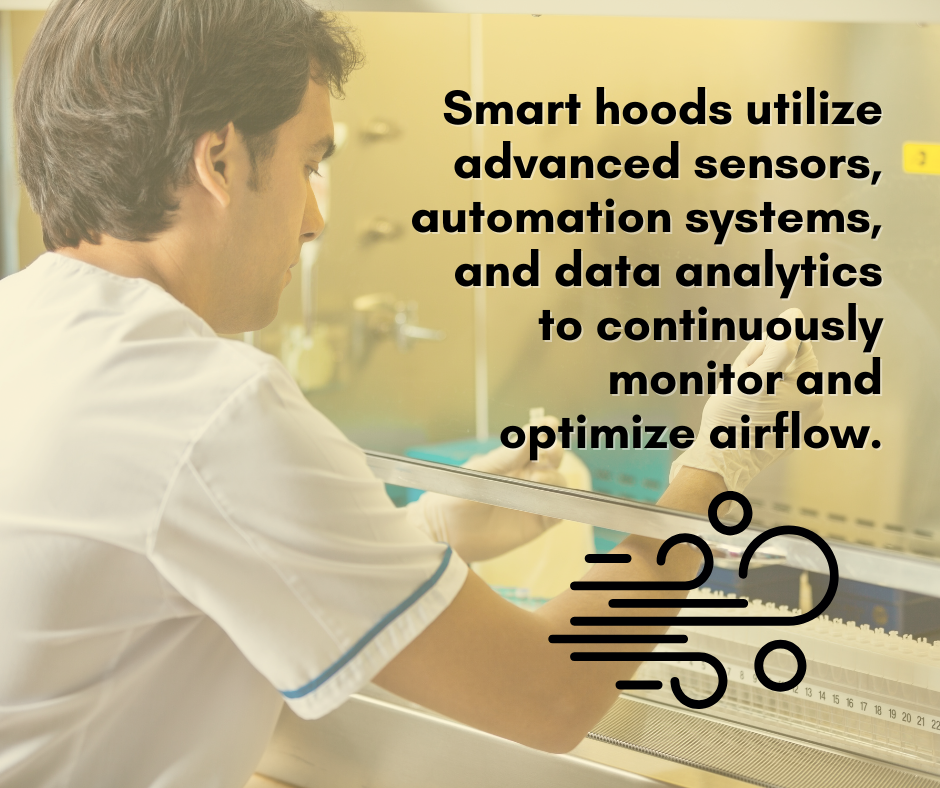As laboratories increasingly focus on sustainability and environmental stewardship, they are striving to minimize their ecological impact while upholding safety standards.
A key area that needs attention is the choice and use of fume hoods. These vital devices safeguard lab personnel from harmful fumes and maintain a controlled working environment. Fume hoods are known for being significant energy consumers due to their continuous air volume exhaust systems. Fortunately, technological advancements have introduced energy-efficient fume hood options that adjust airflow according to the specific needs of the lab. These cutting-edge fume hoods not only enhance safety but also contribute significantly to laboratories’ sustainability efforts.

Understanding the Significance of Energy Efficiency in Laboratories
Being energy-efficient in a laboratory is essential for several reasons. To begin with, green laboratories help reduce the environmental impact of lab operations by minimizing carbon emissions and conserving resources. Laboratories often consume large amounts of energy and implementing energy-efficient practices can contribute to sustainability goals and the fight against climate change.
Also, energy efficiency in laboratories may lead to cost savings. By optimizing energy use, laboratories may reduce utility expenses, which can be a significant portion of their overall budget. These potential savings can be redirected towards research, acquiring advanced equipment, or furthering sustainability initiatives, ultimately enhancing the laboratory’s efficiency and effectiveness.
In addition, energy efficiency assists in improving laboratory safety. For example, energy-efficient fume hoods with intelligent sensors and automation systems ensure proper containment of hazardous fumes while minimizing energy consumption, creating a win-win situation for safety and efficiency.
These advanced hoods integrate state-of-the-art sensors, airflow management systems, and intelligent controls to maintain optimal conditions. By constantly monitoring and adjusting airflow, energy-efficient fume hoods ensure that hazardous fumes are effectively contained, minimizing the risk of exposure. This commitment to safety aligns with the core objectives of laboratories while also supporting their sustainability initiatives.
Energy-Efficient Fume Hoods in Green Laboratories
Variable Air Volume (VAV) Systems: Tailoring Airflow to Laboratory Needs
One notable energy-efficient option for fume hoods is the integration of Variable Air Volume (VAV) systems. Traditional fume hoods rely on constant air volume exhaust, leading to unnecessary energy consumption. In contrast, VAV systems provide a dynamic airflow control mechanism that adjusts the volume of air extracted based on the laboratory’s actual needs. By utilizing sensors and intelligent controls, VAV fume hoods optimize airflow while ensuring safety standards are met.
VAV fume hoods are designed to respond to changes in the laboratory environment. For example, if the sash is partially closed or if the occupancy level decreases, the VAV system will reduce the airflow accordingly. This intelligent manipulation of airflow prevents energy waste because the fume hood only consumes the necessary amount of air to maintain a safe working environment. As a result, laboratories can significantly reduce their energy consumption and associated costs while still prioritizing the well-being of their personnel.

In addition, VAV systems offer greater flexibility to laboratory operations. Researchers often perform tasks with varying levels of fume generation. With VAV fume hoods, the airflow can be adjusted to match the specific requirements of each experiment. This adaptability allows laboratories to optimize energy usage on a case-by-case basis, minimizing unnecessary airflow during low-fume-generating activities and ensuring adequate containment during high-risk procedures. By providing this level of control and efficiency, VAV fume hoods contribute to a more sustainable and cost-effective laboratory environment.
Low-Flow Fume Hoods: Balancing Safety and Efficiency
Another energy-efficient option gaining popularity in green laboratories is the utilization of low-flow fume hoods. These hoods are designed to maintain a controlled work environment while utilizing significantly less airflow compared to traditional fume hoods. With design elements such as airfoil shapes and aerodynamic sashes, low-flow hoods effectively contain hazardous substances while reducing energy consumption.
The key principle behind low-flow fume hoods is the concept of minimizing the volume of air extracted while maintaining proper containment. This is achieved through careful engineering and optimization of the hood’s design and airflow patterns. By reducing the airflow without compromising safety, low-flow fume hoods achieve remarkable energy savings.

One of the primary advantages of low-flow fume hoods is their ability to strike a balance between safety and efficiency. These hoods maintain a consistent face velocity, which is the speed of air flowing into the hood opening, ensuring that hazardous fumes are effectively captured and contained. By optimizing the airflow patterns within the hood, low-flow hoods create a laminar flow that directs the fumes toward the exhaust system, preventing their dispersion into the laboratory environment. This targeted airflow approach maximizes the containment efficiency of the hood, ensuring the safety of laboratory personnel.
In addition, low-flow fume hoods contribute to long-term cost savings for laboratories. The reduced airflow results in lower energy consumption, translating into decreased utility expenses.
Furthermore, the reduced airflow requirements have a cascading effect on the laboratory’s HVAC system. With less air being exhausted, the HVAC system needs to work less to compensate for the air imbalance, leading to additional energy savings. These financial benefits make low-flow fume hoods an attractive option for green laboratories seeking to minimize their operating costs while embracing sustainable practices.
It is important to note that the successful implementation of low-flow fume hoods requires careful consideration of factors such as proper hood design, regular maintenance, and appropriate selection of materials. Laboratories must work closely with experienced professionals and fume hood manufacturers to ensure that the design and specifications of low-flow hoods align with their specific needs and safety requirements.
Regular inspections and maintenance protocols should also be established to guarantee the optimal performance and safety of the hoods over time.
Smart Fume Hoods: Unleashing the Power of Automation and Data
As technology advances, the emergence of smart fume hoods has introduced a new era of energy efficiency and enhanced laboratory operations. Smart hoods utilize advanced sensors, automation systems, and data analytics to continuously monitor and optimize airflow based on real-time conditions.
Smart fume hoods leverage the power of automation to enhance energy efficiency. They incorporate sensors that detect various settings such as sash position, occupancy, and airflow levels. Based on this information, the automation system adjusts the airflow to match the laboratory’s requirements. For example, if the sash is opened, indicating active experimentation, the smart fume hood will increase the airflow to ensure proper containment. On the other hand, if the sash is closed or the laboratory is unoccupied, the system will reduce the airflow, conserving energy without compromising safety.

Another significant advantage of smart fume hoods is their ability to provide valuable data and insights. By collecting and analyzing real-time data on energy consumption, airflow patterns, and usage statistics, laboratories gain invaluable information to optimize their operations further. This data-driven approach allows for informed decision-making, enabling laboratories to identify areas for improvement, implement energy-saving measures, and track their progress toward sustainability goals.
Finally, smart fume hoods often come equipped with user-friendly interfaces and remote monitoring capabilities. Laboratory personnel can access real-time data, receive alerts for potential hazards or malfunctions, and make adjustments as needed. This seamless integration of technology not only enhances safety but also improves the overall user experience and efficiency of laboratory operations.
Maximizing Efficiency, Minimizing Footprint
Energy efficiency in fume hoods is a vital consideration for laboratories that are committed to reducing their environmental impact while maintaining safety standards. Through the integration of energy-efficient fume hood options such as VAV systems, low-flow hoods, and smart fume hoods, laboratories can significantly reduce their energy consumption, minimize utility costs, and contribute to a more sustainable future.
By optimizing airflow based on laboratory requirements, energy-efficient fume hoods strike a balance between safety and efficiency, ensuring that hazardous fumes are properly contained while conserving energy. Whether it’s through the dynamic airflow adjustments of VAV systems, the controlled containment of low-flow hoods, or the automation and data-driven optimization of smart fume hoods, each option presents unique benefits for green laboratories.
The adoption of energy-efficient fume hoods not only aligns with sustainability objectives but also contributes to long-term cost savings. Laboratories can reduce their energy consumption, lower utility expenses, and minimize their carbon footprint, all while maintaining a safe working environment for their personnel.
Additionally, the progress made in energy-efficient fume hoods highlights the ongoing advancements and creativity in laboratory equipment, leading to more sustainable practices and improved efficiency.
To successfully implement energy-efficient fume hood options, laboratories should engage in thorough research and collaborate with experienced professionals in the field. Proper design, installation, and maintenance are crucial to ensure the optimal performance and safety of these hoods. Green laboratories should also consider investing in training programs to educate their personnel on the proper use and maintenance of energy-efficient fume hoods, maximizing their benefits.
Overall, energy-efficient fume hood options provide green laboratories with the opportunity to enhance sustainability, reduce operational costs, and prioritize the safety of their personnel. Whether it is the utilization of VAV systems, the implementation of low-flow hoods, or the integration of smart fume hoods, each option offers a unique approach to optimizing airflow and minimizing energy consumption. By embracing these energy-efficient solutions, laboratories can take significant strides toward achieving their sustainability goals and contribute to a greener future for scientific research and development.
National Laboratory Sales is an Illinois-based company with over two decades of experience. Our mission is simple – we are dedicated to providing our clients with personalized service and innovative design solutions using premiere products. Whether you’re building a new lab or upgrading your existing one, you’ll find a remarkable selection of casework, workstations, fume hoods, and related lab products at National Laboratory Sales. Most of our items can be shipped quickly – in most cases less than two weeks. Contact us today.


